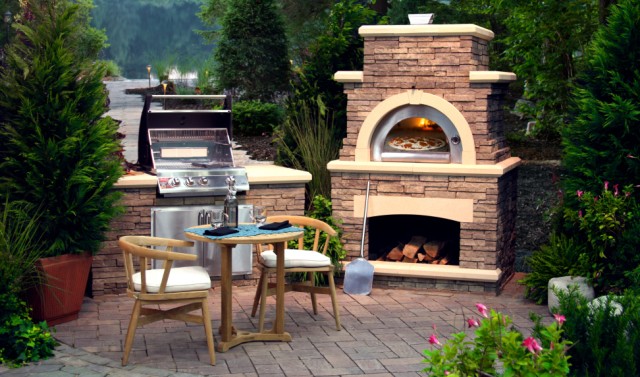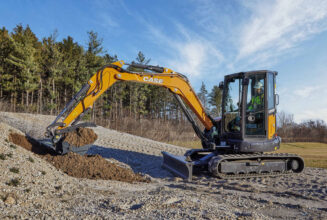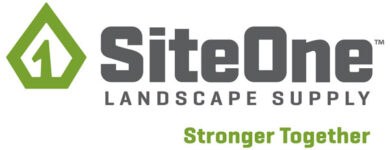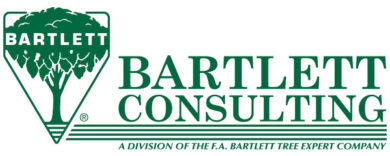Fire: The Hottest Topic in Outdoor Design

Research continues to name fire features as one of the top “must haves” in modern outdoor living, making designing with fire a hot topic in outdoor design. In the early days of the trend, the fire feature was typically an add-on freestanding element, such as a ceramic chiminea or metal fire bowl, which could be easily moved to other positions as needed. However, the trend has evolved over time to include more built-in permanent fixtures — such as a custom outdoor fireplaces, fire pits, or gas fire tables — which require more planning in terms of the overall design scheme of the outdoor living area.
“We’ve seen a tremendous increase in hardscape fire features,” said Jackie Paulsen, marketing director of Belgard Hardscapes. “Homeowners want to create an outdoor space that is truly an extension of their home, and nothing says ‘home’ like a cozy fire. And designers like the flexibility of tying together the entire design by either creating a custom fire feature using our coordinated pavers and retaining wall products or by choosing from one of the modular factory-built fireplaces or fire pits from our Belgard Elements Collection.”
Safety is top priority
Whether designing with a site-built or factory-built fire feature, there are several safety issues that must be considered. Before getting started, check with local municipalities regarding safety codes to avoid costly design mistakes. Never underestimate the value of a professional plumber when running and installing gas lines. And always remember that with fire comes heat.
“Belgard Elements fire features are all UL listed and engineered with a special heat lining,” said Joe Raboine, who helped create the Belgard Elements Collection, which includes modular fireplaces and brick ovens. “But if you’re designing a custom fireplace, be sure the contractor uses only non-combustible materials. I’ve spoken with many fire chiefs who’ve told me a number of horror stories.”
Raboine also recommends including a fire-resistant liner when building a site-built fire pit over existing hardscapes. “This is especially important if the fire pit is on top of granite or limestone, which can retain water and explode when overheated,” he said.
Finding the ideal spot
A fire feature will be the visual anchor of the design. When determining the best placement, it’s best to check for building code restrictions before getting started.
“Although it varies by municipality, gas-burning fire features can typically be placed just about anywhere, including right next to the house. But most building codes require a wood-burning feature to be placed at least ten feet from any vertical structure,” said Raboine.
When using a wood-burning fire feature, Raboine also recommends testing wind patterns in the yard with a portable grill to check smoke flow direction. “Hills, trees, and existing structures often affect the wind patterns. The last thing you want to do is build a beautiful fire pit that can’t be used because the smoke always chokes out the seating areas,” he explained.
Raboine noted that often the best option is to make the fire feature the furthest design element. “It takes into account safety and functionality and creates a dramatic view from both inside the house and outside the back door,” he said.
Emerging trends
Homeowners continue to look for new ways to turn their outdoor spaces into an extension of the home. In this respect, one emerging trend in outdoor cooking is the brick oven, which can often double as both a fire feature and a cooking appliance.
“Homeowners want to be able to use their outdoor kitchens the same way they use their indoor kitchens, and brick ovens can cook anything that can be cooked in a regular oven,” said Raboine. “Some people typically think of pizza and bread when thinking of a brick oven, but they can do so much more.”
Raboine notes that the brick ovens in the Belgard Elements line are constructed with hardscape materials that can be coordinated with the pavers and garden walls of the surrounding outdoor living space, which creates an overall cohesive look to the design.
“A Belgard Elements brick oven is not only functional for cooking, it’s a striking accent piece that becomes a favorite gathering spot,” he said.
Integrated and functional design
Once placement of the fire feature has been determined, there are a number of ways to integrate additional hardscape elements that complement the feature and create a cohesive outdoor living space. Paver pattern and retaining wall designs can mimic the lines of the fire feature, delineate separate gathering areas, or direct traffic flow.
“One option is to create a paver pattern in front of the fireplace that mimics the look of a rug, which enhances the concept that the space is an extension of the home,” said Ken O’Neill, vice president of Belgard Hardscapes.
Seat walls can also be incorporated into the design to offer a dimensional element that’s both functional and visually appealing. However, seat walls should be placed at least four feet from the fire feature to maintain a comfortable distance from the heat source.
“It’s important to consider how the space will be used and remember to leave room as needed for furniture and walking space,” said O’Neill.
Finishing touches
Several elements can be added to the design that will make the space more functional, as well as add comfort and ambiance. Low-voltage lighting can be installed directly onto the outside of the fire feature, as well as on nearby walls, pillars, and around landscaping to increase both visibility and mood. Outdoor-rated music speakers can be installed at various locations around the space to allow for a consistent ambient sound level throughout the space without bothering the neighbors. And custom cushions added to seat walls will add both color and comfort. Water features can also be incorporated into the design to add another dimension.
“It’s important to consider a lot of these elements in the planning stages, even if it’s going to be phased in later,” said O’Neill. “Pipes and wires can be hidden and capped off to be used at a later date, but it’s much less invasive and expensive to run future utilities before the hardscapes go down.”
Article provided by Belgard Hardscapes.



